scale bar = 1cm.
Red Ironbark - native (Eucalyptus tricarpa)
Home....
Menu....
Common name index....
Scientific name index....
Glossary....
Other eucalypts....
Juvenile leaves....
Red Ironbark p2
The hard, rugged bark is distinctive. Ironbarks are in scattered localities near Castlemaine e.g. Shicer Gully, Eureka and the Monk, and Muckleford Forest. Ironbarks are more abundant in lower rainfall areas e.g. near Maryborough and Bendigo.
Recognise Red Ironbark by
- the buds and fruit are in threes, and are long stalked, so that the buds and fruit are drooping
- the juvenile leaves are stalked, not in opposite pairs, and much longer than wide
- the bark is dark coloured to black, and rugged.
Mugga Ironbark (E. sideroxylon) is often planted in streets. This non-indigenous species has buds and fruit in clusters of seven. Some forms have pink flowers.
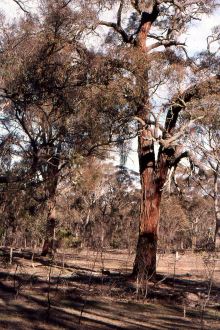
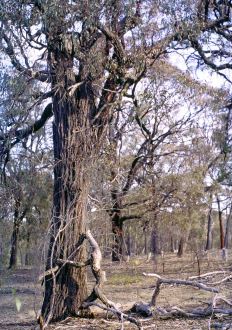
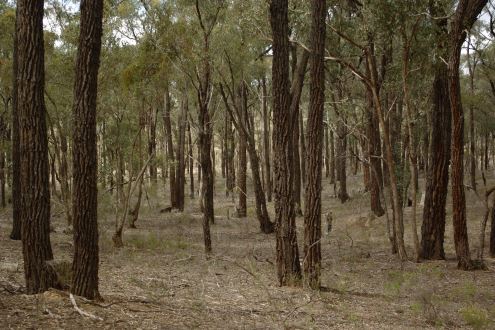
1, 2: Bung Bong is noted for its large Ironbarks, growing on formerly grazed farmland.
The ironbarks in the forest in the background are much smaller. 3: Box Ironbark forest often has a very sparse understorey. Fontainbleu.
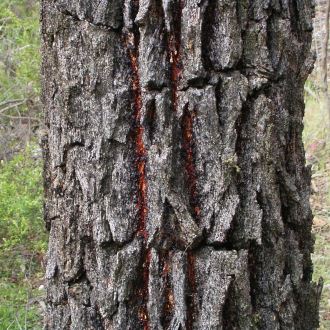
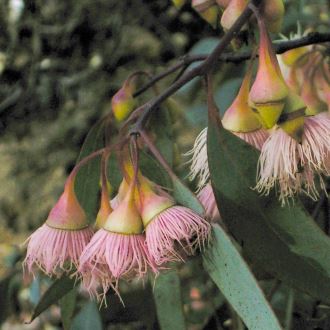
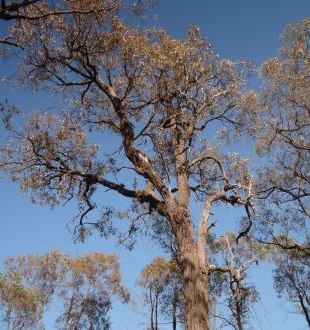
4: The distinctive, hard rugged bark. Eureka. 5: An unusual form with pink flowers, and with some flowers in bundles of more than three. This is probably a hybrid between E. tricarpa and E. sideroxylon.. 6: Sparse foliage during drought. Muckleford Forest.



4: The distinctive, hard rugged bark. Eureka. 5: An unusual form with pink flowers, and with some flowers in bundles of more than three. This is probably a hybrid between E. tricarpa and E. sideroxylon.. 6: Sparse foliage during drought. Muckleford Forest.